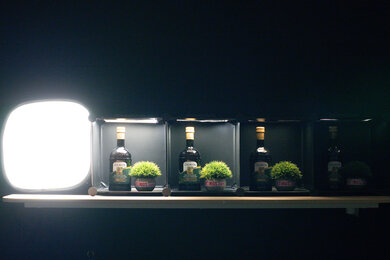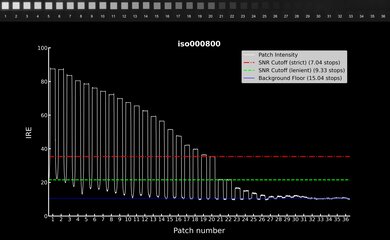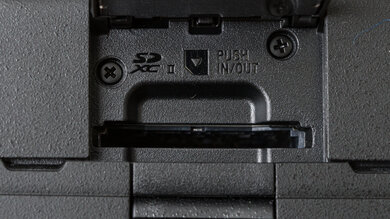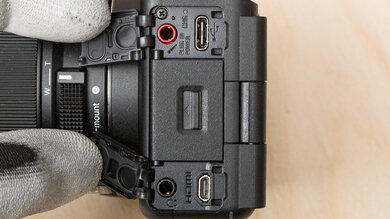The Sony ZV-E10 II is a mirrorless interchangeable-lens vlogging camera. This new iteration of the Sony ZV-E10 offers some notable improvements, including a new sensor, borrowed from the Sony FX30 in the brand's high-end cinema lineup, as well as a larger battery and better internal video recording specs. It's being released alongside a new version of the kit lens that works even better for video applications, with a new linear motor for smoother focusing and SteadyShot integration. All in all, this is poised to be the ultimate affordable camera for content creators.
Our Verdict
The Sony ZV-E10 II is great for travel photography. It's a very portable camera for an interchangeable lens model, and it has an excellent battery life rating for photography. The image quality from its sensor is great, though it isn't the best option for low-light shooting. Its autofocus system also does a good job of keeping moving subjects in focus. Unfortunately, since this is primarily a vlog camera, there's no viewfinder, which can be limiting for photography, especially in sunny conditions.
-
Portable body.
-
Great battery life.
-
Good autofocus tracking.
-
No viewfinder.
-
Not weather-sealed.
The Sony ZV-E10 II is very good for landscape photography. Its image quality is great, with enough dynamic range to preserve a lot of detail in high-contrast landscapes. However, its low-light noise handling is just okay, so it's less suited to nighttime landscape photography. It's also highly portable and has a long battery life for photography, making it a good option to take on longer hikes. It's well-built, too, but doesn't have any weather sealing.
-
Portable body.
-
Great battery life.
-
Impressive dynamic range.
-
No viewfinder.
-
Noise handling is just okay.
-
Not weather-sealed.
The Sony ZV-E10 II is great for sports and wildlife photography. Its autofocus system performs well overall, with an effective subject detection and tracking system that can detect humans, animals, and birds with precise eye tracking. It can also shoot at fairly quick burst speeds, although it lacks a mechanical shutter, so rolling shutter distortion can impact very fast-moving subjects. It also doesn't have the largest image buffer when shooting in RAW format. Thankfully, the buffer is quick to empty, so it won't slow you down too much.
-
Fairly quick burst shooting.
-
Good autofocus tracking.
-
Buffer is quick to empty.
-
No viewfinder.
-
No mechanical shutter.
-
Small RAW buffer size.
The Sony ZV-E10 II is an excellent vlogging camera. It can record 4k video at up to 60 fps, with internal 10-bit capture and Log profiles to get the most out of its sensor. Its fully articulated screen and full touch functionality make it easy to record yourself for sit-down or walk-and-talk vlogs, and its 'Slow & Quick' mode makes it easy to incorporate slow-motion footage. It's also relatively portable and has several features aimed to make vlogging easier for beginners. Its autofocus also works seamlessly in video mode. That said, it doesn't have in-body image stabilization (IBIS), though optical or digital stabilization can help reduce camera shake to some degree.
-
Up to 4k at 60 fps.
-
Internal 10-bit 4:2:2 color.
-
Fully articulated touchscreen.
-
'Product Showcase' mode is useful for product vloggers.
-
No IBIS.
The Sony ZV-E10 II is impressive for studio video. It can record 10-bit 4:2:2 color internally and offers Log recording in S-Log 3 to get more dynamic range. It can record at up to 60 fps in 4k, which is nice, though there's a slight crop when shooting at 60 fps. Its battery life is also good, but it can overheat with very long recording sessions. There are mic and headphone jacks, as well as a Micro HDMI port, to connect videography peripherals, but overall, the body is designed more for lighter video work, with just a single SD card slot and ergonomics that are designed more for vlogging and basic video recording.
-
Up to 4k at 60 fps.
-
Internal 10-bit 4:2:2 color.
-
Good video quality.
-
Risk of overheating after prolonged recording in 4k.
-
Only one SD card slot.
The Sony ZV-E10 II isn't meant for POV action video but works well for recording action and sports from the sidelines. It has a fairly wide range of frame rate options, including a dedicated 'Slow & Quick' mode for easy slow-motion or time-lapse recording. However, it isn't weather-sealed, and the camera lacks IBIS for smoother handheld shots.
-
Up to 4k at 60 fps.
-
Good autofocus tracking.
-
Not designed for POV action video recording.
-
No IBIS.
-
Not weather-sealed.
The Sony ZV-E10 II has good RAW image quality. It captures images with plenty of dynamic range, which is great for retaining detail in high-contrast scenes. Images are also sharp and detailed, thanks to its high-resolution sensor. However, it doesn't have the best noise handling in low light.
-
Impressive dynamic range.
-
Relatively high resolution sensor.
-
Noise handling is just okay.
- 8.3 Travel Photography
- 8.0 Landscape Photography
- 8.2 Sport & Wildlife Photography
- 8.5 Vlogging
- 8.6 Studio Video
- 5.8 Action Video
Performance Usages
- 7.7 Raw Photo
Changelog
-
Updated May 05, 2025:
We wrote text for the new tests added in Test Bench 0.13.
-
Updated Feb 20, 2025:
We added a link to the Nikon Z 50II in the Viewfinder box.
- Updated Feb 11, 2025: We've converted this review to Test Bench 0.13. We've added new tests for Video Dynamic Range and Luminosity Patch Detection. You can learn more about these updates in the changelog.
- Updated Aug 27, 2024: Review published.
- Updated Aug 21, 2024: Early access published.
Check Price
Differences Between Sizes And Variants
The Sony ZV-E10 II comes in two colors: Black and White. We purchased the Black variant, and you can see its label here.
You can buy the camera body on its own or bundled with the Sony E 16-50mm 3.5-5.6/PZ OSS II kit lens or other lenses depending on the retailer. It's worth noting that Sony doesn't include sensor covers or rear lens caps when purchasing a lens kit bundle.
Compared To Other Cameras
The Sony ZV-E10 II is the second iteration of Sony's entry-level vlogging camera. With some key upgrades over its predecessor, it's one of the best vlogging cameras on the market right now, especially at an entry-level price point. With a relatively quick sensor readout speed, 4k recording at up to 60 fps, and useful extra features for beginners, this is a versatile option for beginner vloggers and content creators.
For more options, be sure to check out our recommendations for the best YouTube cameras, the best vlogging cameras with flip screens, or the best digital cameras overall.
The Sony ZV-E10 II is the follow-up to the Sony ZV-E10. It's a better all-around camera, with a new sensor and processor, a bigger battery, and an updated autofocus system. It has more frame rate options, a faster sensor readout speed, and better internal video recording capabilities, including internal 10-bit 4:2:2 capture. That being said, the original ZV-E10 is still a solid option for those on a tighter budget or just getting started with video shooting.
The Sony α6700 and the Sony ZV-E10 II may share some common internal components, including the same APS-C sensor and processor, but they're aimed at different users. The α6700 is the more well-rounded of the two and the better choice for photographers and hybrid shooters. That's because it includes a viewfinder and has better ergonomics and build quality, though it isn't quite as portable as the ZV-E10 II. If, however, you're primarily interested in vlogging and content creation, you'll be all set with a ZV-E10 II.
The Sony ZV-E1 and the Sony ZV-E10 II are both part of Sony's vlogging camera lineup. The biggest difference between them is the sensor. The full-frame sensor of the ZV-E1 captures better video quality overall and is much better suited to low-light shooting. That said, if you don't need full-frame image quality, the ZV-E10 II covers a lot of the same ground at a lower price point.
The Canon EOS R10 and the Sony ZV-E10 II are both great entry-level cameras with APS-C sensors, but they each have their own advantages. The Canon has better ergonomics and a viewfinder, as well as faster burst shooting, making it a bit better suited for photography. The ZV-E10 II, on the other hand, is designed more for vlogging, with a more portable body, three-capsule vlogging mic, and a faster readout speed with less rolling shutter effect.
Test Results
The Sony ZV-E10 II is quite portable. It's a great size for its intended use for vlogging and content creation, with a very lightweight design that makes it easy to take on the go. Even with the Sony E 16-50mm 3.5-5.6/PZ OSS II kit lens attached, it's a very compact interchangeable-lens setup.
The camera feels well-built. Taking a cue from the Sony ZV-E1, the body has a matte finish, though, unlike the ZV-E1, the grip here is made of textured plastic rather than being rubberized. The buttons and dials feel sturdy, providing good physical feedback, though they're smaller and flatter than the buttons and dials on more premium models like the ZV-E1 or the Sony α6700. The shoulder strap attachments are fixed in place, which is great since they feel sturdy and won't rattle while recording. While the camera isn't weather-sealed, the SD card slot and battery compartments are covered with locking and hinged doors, though the other ports and inputs are only covered by rubber flaps. Overall, the camera is a slight step up from the original Sony ZV-E10.
The camera has good ergonomics overall. It has a slightly larger body and hand grip than the Sony ZV-E10, making for a slightly more comfortable shooting experience. The camera is quite portable, but it's on the smaller side for those with very large hands, so it can feel a bit cramped. Otherwise, it's easy to operate and change settings with well-placed controls. You can also navigate and change settings using the touchscreen, which is great for vloggers using the camera in a selfie orientation. However, it lacks a viewfinder, which isn't ideal for photography.
This camera doesn't have a viewfinder, but if that's an important feature, consider an entry-level hybrid model like the Nikon Z 50II.
The camera's screen is fully articulated and sharp and gets bright enough to overcome glare on sunny days. It's fully touch-capable, including for menu navigation, offering a bit more functionality than the Sony ZV-E10. You can also use it as a touch shutter to select focus points or subjects to track and enable auto exposure (AE), or for playback functions when reviewing images or videos on the monitor.
The Sony ZV-E10 II has an excellent menu system. It's easy to find what you're looking for, and there are a ton of customization options, including a custom 'My Menu' page where you can add shortcuts to whatever settings you want and a customizable quick 'Fn' menu for commonly used settings. There's also the 'Main Menu,' which acts as a sort of home page, where you can find the most commonly used settings for both photo mode and video mode.
The Sony ZV-E10 II uses a high-resolution, backside-illuminated APS-C sensor. It's the same sensor found on the Sony α6700 and the Sony FX30, which is part of Sony's cinema lineup. It also has an updated processor.
The camera has amazing battery life. The camera now takes larger FZ-100 batteries, the same kind used on the Sony ZV-E1. It's CIPA-rated for 610 shots on a full charge, though CIPA ratings should be taken with a grain of salt, and your real-world battery life with vary depending on your usage and settings. Still, it's an excellent rating among mirrorless options.
For video recording, the camera can last for over an hour and a half of continuous recording in 4k, which is good. For longer recording sessions, you can extend the battery with an external power supply. It's worth noting that Sony no longer includes USB-C cables or an A/C adapter in the box.
The Sony ZV-E10 II shoots at a respectably quick max burst rate. However, it doesn't have a mechanical shutter. The readout speed is fairly fast, but you'll still encounter some jello effect or distortion with very fast-moving subjects. When shooting in JPEG format, you can shoot indefinitely, though the buffer fills up after only 35 RAW files, so timing is a bit more critical for burst shooting in RAW format. Thankfully, the buffer is very quick to empty.
The Sony ZV-E10 II uses Sony's ever-reliable Real Time Tracking AF, now with improved algorithms and processing. It automatically detects eyes, including humans, animals, and birds, though, unlike the Sony α6700, it doesn't include dedicated insect, car/train, or airplane detection modes. Overall, the camera does a good job of tracking moving subjects. It performs notably better than its predecessor, resulting in a better hit rate, though it isn't quite as seamless as higher-end models in Sony's lineup, like the Sony ZV-E1.
The camera doesn't have in-body image stabilization, but when paired with a lens with Optical SteadyShot, you can capture clear handheld images at very slow shutter speeds. Image stabilization performance will vary depending on different factors, like what lens you use, the focal length you shoot at, and even how steady your hands are. We tested stabilization using the Sony E 16-50mm 3.5-5.6/PZ OSS II kit lens.
The Sony ZV-E10 II has impressive dynamic range. While it doesn't have as much usable dynamic range as most full frame sensors these days, the sensor preserves a wide range of highlight and shadow detail, making it well-suited to capturing high-contrast scenes.
Note: This camera's lossless compressed ARW files aren't compatible with LibRaw and Imatest, the programs we use to measure RAW dynamic range. As a workaround, we converted the ARW file to DNG format using Adobe DNG Converter. We'll retest and update the results, if needed, once LibRaw adds support for the camera's ARW files.
The Sony ZV-E10 II has a high-resolution sensor and resolves a great amount of fine detail. You have a fair amount of leeway to crop in your images without losing too much visible sharpness and detail.
Note: This camera's lossless compressed ARW files aren't compatible with LibRaw and Imatest, the programs we use to measure RAW sharpness. As a workaround, we converted the ARW file to DNG format using Adobe DNG Converter. We'll retest and update the results, if needed, once LibRaw adds support for the camera's ARW files.
The camera has okay noise handling in low light. Noise becomes pretty apparent with shorter exposures or situations in which there's less light hitting the sensor. However, you can reduce noise by shooting at longer shutter speeds or opening up your aperture.
Note: This camera's lossless compressed ARW files aren't compatible with LibRaw and Imatest, the programs we use to measure RAW noise. As a workaround, we converted the ARW files to DNG format using Adobe DNG Converter. We'll retest and update the results, if needed, once LibRaw adds support for the camera's ARW files.
The Sony ZV-E10 II has a wide range of video features. It supports Log recording in S-Log3 and outputs 10-bit 4:2:2 video via HDMI. There are many different picture profiles to choose from, with a wide range of gamma curve options, color modes, and other settings to fine-tune the picture profiles. You can read about all of those options here. When shooting with the S-Log3 or HLG gamma curve, you can use the 'Gamma Display Assist' function to display the image with a normal gamma applied to approximate how it'll look after processing. You can also import up to 16 custom LUTs (in .cube format), in addition to the camera's built-in 's709' and '709 (800%)' LUTs, and then apply those LUTs to your footage in-camera to speed up your workflow. When using 'Log Shooting Settings,' you can toggle the 'Display LUT' setting to preview those LUTs on the monitor.
The camera also has a digital stabilization feature in video mode. There are two settings: 'Standard' and 'Active.' The 'Active' mode provides extra stabilization but incurs a slight crop and isn't available when recording at 120 fps. You can see how the modes compare here.
Like the Sony ZV-E1, the ZV-E10 II uses a three-capsule built-in microphone. You can set its directionality to 'Auto,' 'Front,' 'All,' and 'Rear.' In the 'Auto' mode, the camera adjusts the mic's directionality depending on whether the autofocus detects a human subject in the frame. If no subject is detected, it defaults to 'All.'
The camera records in XAVC format, including XAVC S (MPEG-4 AVC/H.264) and XAVC HS (MPEG-H HEVC/H.265 with Long GOP compression), as well as XAVC S-I for All-Intra recording. XAVC S is available for both FHD and 4k, while XAVC HS is 4k only. When shooting 4k at 30 fps, the file format is limited to XAVC S, while 4k at 24 fps or 60 fps can be recorded in either XAVC S or XAVC HS.
The Sony ZV-E10 II can record at up to 60 fps in 4k, with a slow-motion recording option in its 'S&Q' mode that allows for up to 120 fps slow-motion with no audio. When using the slow-motion mode, there's a slight 1.05x crop when the playback speed is set to 60 fps, but no crop with a 30 fps or slower playback speed.
The camera has excellent internal recording capabilities. Unlike the original Sony ZV-E10, it can record 10-bit 4:2:2 color internally, giving you more flexibility with color grading. There are no recording time limits, and the camera rarely overheats. You may still experience some overheating during longer recording sessions, especially if you set the 'Auto Power OFF Temp' setting to 'Standard.' Sony advertises a five-minute recording time in 4k before it overheats when the camera is set to the 'Standard' setting versus 30 minutes when set to 'High.'
The camera's autofocus works incredibly well in video mode. You can set the subject detection to track humans, animals, or birds. Overall, the camera has no trouble keeping track of moving subjects.
In addition, the camera has a few beginner-friendly extra features for vloggers and content creators. These include the 'Product Showcase' mode, which automatically focuses on any object held up in the frame, rather than prioritizing faces or other subjects. You can see that in action here. There's also a dedicated 'Background Defocus' button, which quickly lets you toggle between a shallow depth of field and a wide depth of field while maintaining your exposure, which is handy for beginners who haven't mastered the aperture setting yet. Other little touches include vertical display orientation when recording vertical videos, as you can see here.
Finally, the camera supports focus breathing compensation when using compatible lenses, which corrects for focus breathing in videos. That is, it corrects for the shift in angle of view when there's a change in the focus distance. You can see that at work here. The video on the left was recorded with focus breathing compensation enabled.
The new sensor has a significantly faster readout speed than the sensor on the original Sony ZV-E10. You'll still see some skewing and distortion with faster camera movements, but it's not bad.
The Sony ZV-E10 II can record at up to 120 fps in 1080p with no crop. You can record in either standard mode or in S&Q mode for slow-motion playback, with different playback speed options.
The camera has excellent internal recording capabilities. It can record 10-bit 4:2:2 color internally, giving you more flexibility with color grading. There are no recording time limits, and you're unlikely to experience overheating in FHD.
The camera's autofocus works incredibly well in video mode. You can set the subject detection to track humans, animals, or birds. Overall, the camera has no trouble keeping track of moving subjects.
There's even less rolling shutter effect when shooting in 1080p, which is great. Distortion is less pronounced, though you'll still see some skewed vertical lines with very fast camera pans.
The Sony ZV-E10 II has great video dynamic range overall. Like its predecessor, it captures a very wide number of stops above the background noise floor, but the dynamic range that could be considered usable is notably less. It's still a great video option that can capture a lot of detail in high-contrast scenes, but you won't get the same dynamic range as full-frame options like the Sony ZV-E1.
Tested settings:
- Resolution: 4k
- Frame Rate: 30 fps
- Log Format: S-Log3
The camera has a similar allocation of dynamic range above and below middle gray as its predecessor. There's more dynamic range in the shadows than the highlights, with highlights blowing out quicker at higher ISOs.
Tested settings:
- Resolution: 4k
- Frame Rate: 30 fps
- Log Format: S-Log3
The Sony ZV-E10 II has just a single SD card slot, but in an upgrade from its predecessor, it now supports faster UHS-II cards, which is great. Instead of being in the battery compartment, the slot is now on the side of the camera, similar to the Sony α6700, making it easy to access when using a tripod.
The camera has a USB-C port for charging and file transfer, as well as both a headphone and microphone jack, so you can connect most video peripherals. However, it uses a Micro HDMI port, so you'll have to use an adapter for some external recorders and displays.
Comments
Sony ZV-E10 II: Main Discussion
Let us know why you want us to review the product here, or encourage others to vote for this product.
Update: We wrote text for the new tests added in Test Bench 0.13.
































































